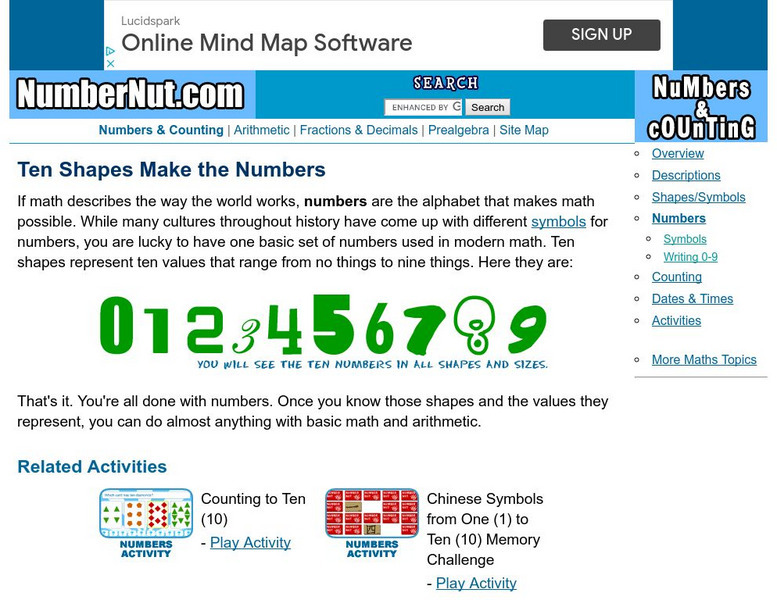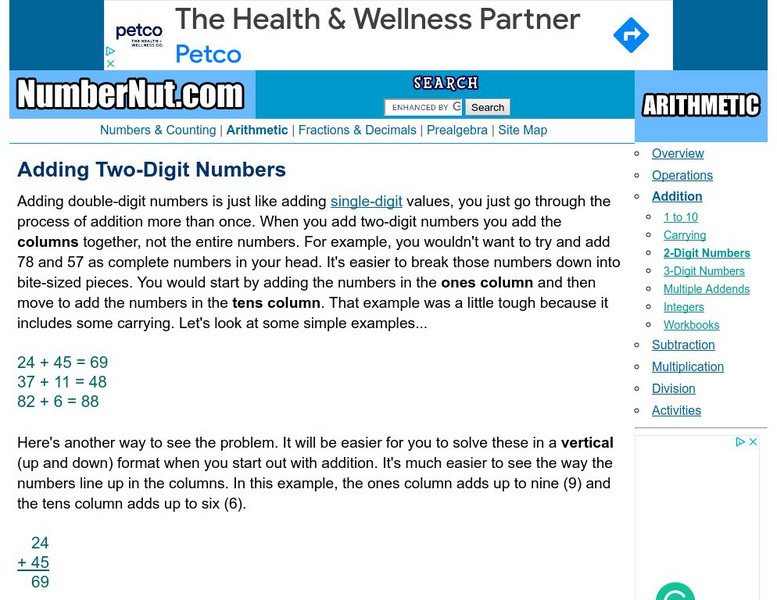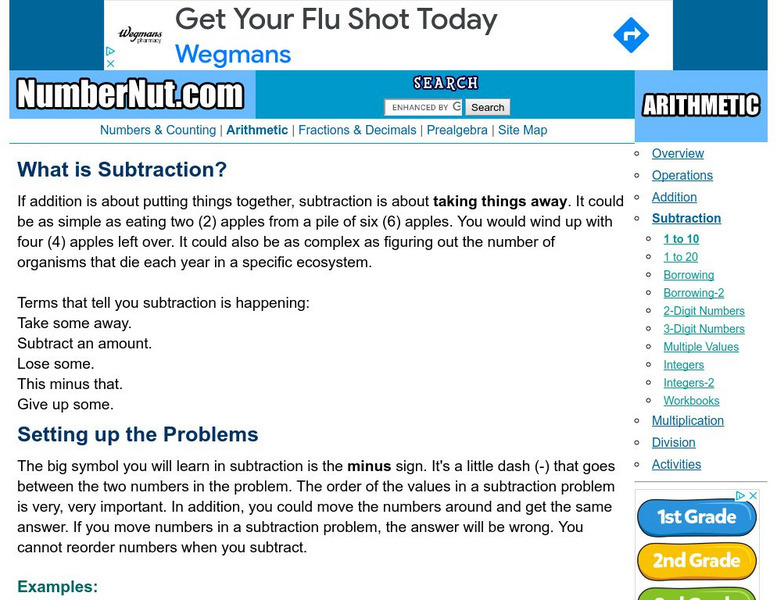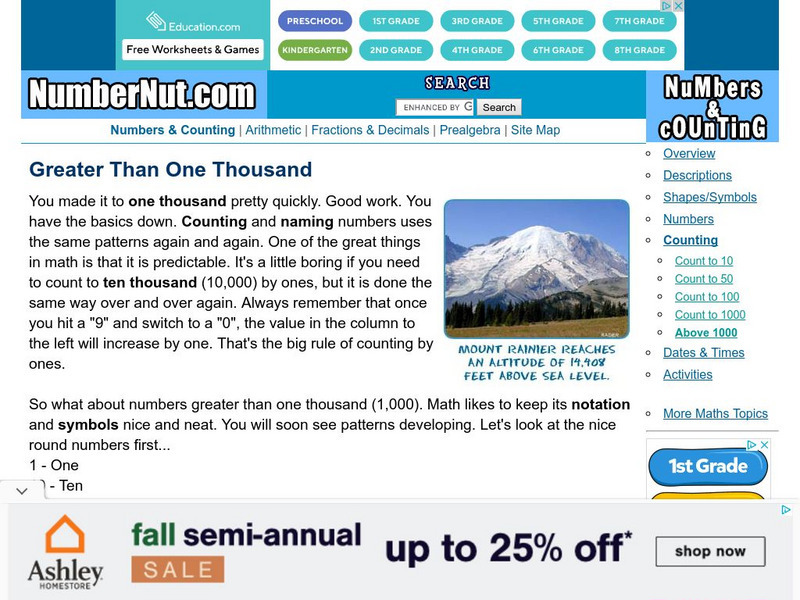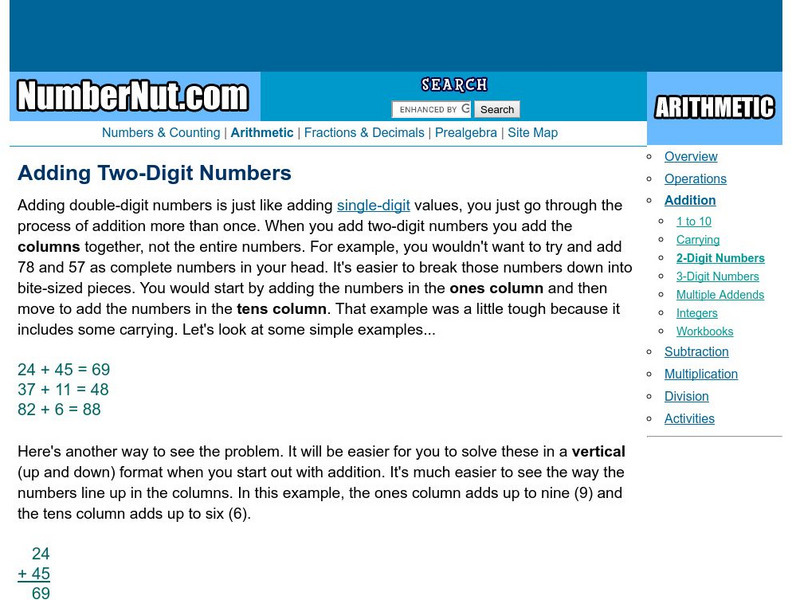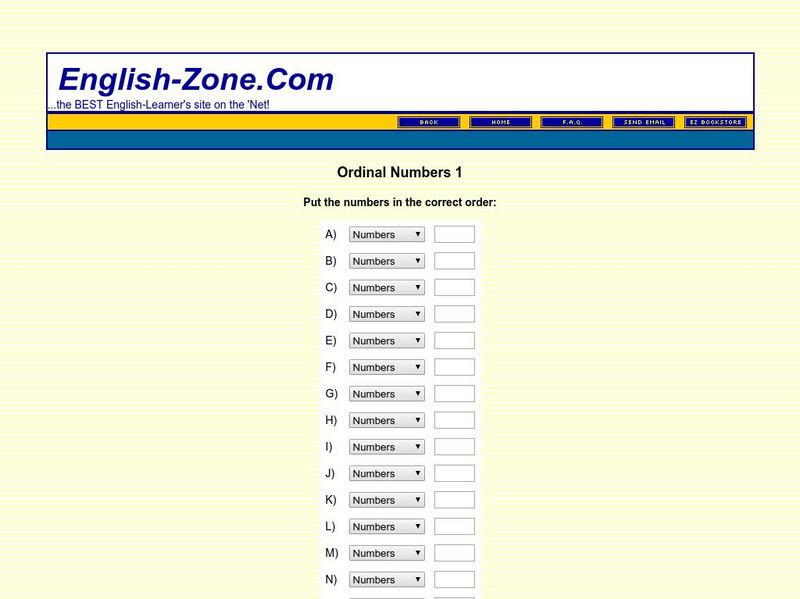Louisiana Department of Education
Louisiana Doe: Louisiana Believes: Eureka Math Parent Guide Place Value, Rounding & Algorithms for Add'n and Subtr'n
A guide to support parents as they work with their students in place value, rounding, and algorithms for addition and subtraction.
PBS
Pbs: Rounding to Wholes, Tenths, and Hundredths
On some nights only certain numbers can get in to the Number Line Party, what's a decimal to do? This interactive exercise combines activities here appear in two other Number-Line Party lessons and focuses on using what you know about...
PBS
Pbs: Place Value: Musical Digits
Learn about place value and the base-10 number system. This video focuses on using what you know about place value to determine what value each of the three digits represents.
PBS
Pbs: Base 60: Babylonian Decimals
Explore a brief history of mathematics in Mesopotamia through the Babylonian Base 60 number system. This video focuses on how a base 60 system does not use fractions or repeating decimals, some of the advantages of a base 60 system, and...
E-learning for Kids
E Learning for Kids: Math: Ice Cream Shop: Four Digit Numbers
On this interactive site students learn to place numbers in ascending and descending order, write 4-digit numbers in expanded notation and discuss place value.
E-learning for Kids
E Learning for Kids: Math: Inca Temple: Numbers to 9999
On this interactive website students practice various math skills using a real life scenario at the pyramids. Those skills include reading 4-digit numbers, understanding place value, and recording the place value of digits in a 4-digit...
E-learning for Kids
E Learning for Kids: Math: Treasure Island: Numbers: 4 Digit Numbers
Students will play interactive games to review place value concepts.
E-learning for Kids
E Learning for Kids: Math: Sheep Farm: Numbers in Words & Numerals: Thousands
Visit Becca at her grandparents' sheep farm. There are thousands of sheep grazing around! Help Becca learn all about 4- and 5-digit numbers here.
E-learning for Kids
E Learning for Kids: Math: Llama Farm: Addition and Subtraction
On this interactive site students learn to solve subtraction problems using a formal algorithm and to apply place value concepts.
E-learning for Kids
E Learning for Kids: Math: Ice Cream Shop: Roman Numerals
On this interactive website students practice various math skills using a real life scenario at an ice cream shop. Those skills include identifying and converting Roman Numerals, identifying place value in a number, and sorting numbers...
NumberNut
Number Nut: Numbers and Counting: Ten Shapes Make the Numbers
A brief introduction to the idea that all numbers in our system of arithmetic are made up of the ten different symbols from zero to nine.
NumberNut
Number Nut: Numbers and Counting: Numeric Symbols
Briefly describes some of the ways that numbers can be represented, including using a few other number systems, such as Roman and Mayan.
NumberNut
Number Nut: Numbers and Counting: Writing 0 9
Explains how to write the numbers from zero to nine using correct penmanship.
NumberNut
Number Nut: Numbers and Counting: Greater Than 1,000
Explains the system of place value for numbers greater than one thousand, and how to write larger numbers using words.
NumberNut
Number Nut: Addition: Adding Two Digit Numbers
Explains how to add two-digit numbers by focusing on each column of digits as you add, rather than the entire numbers.
NumberNut
Number Nut: Addition: Adding Three Digit Numbers
Explains how to add three-digit numbers by focusing on each column of digits as you add.
NumberNut
Number Nut: Subtraction: 1 to 10
Explains the concept of subtraction, and the vocabulary used to talk about it, with reference to subtraction problems with single-digit numbers.
NumberNut
Number Nut: Numbers and Counting: Recognizing Numbers One Through Thirty Activity
A quiz where the player must recognize the number words from one to thirty, and click on the correct number.
NumberNut
Number Nut: Numbers and Counting: Numeric Symbols
What are some of the ways that numbers are described using shapes and words in the world? Learn about Roman numerals and then play the Roman and Chinese Symbols Memory Challenge.
NumberNut
Number Nut: Numbers and Counting: Counting to 1,000
Follow the steps in the examples for place value to the thousands place and then practice the skills with the two interactive activities.
NumberNut
Number Nut: Numbers and Counting: Greater Than 1,000
Follow the steps in the examples for place value for numbers greater than 1000 and then practice the skills with the two interactive activities.
NumberNut
Number Nut: Addition: 2 Digit Numbers
Learn how to add double-digit numbers in this lesson complete with examples, rules, and vocabulary.
NumberNut
Number Nut: Subtraction: 3 Digit Numbers
A brief lesson on subtracting from three-digit numbers that includes detailed examples, rules, and further explanation of borrowing.
English Zone
English Zone: Ordinal Numbers 1
In this exercise/assessment, students order numbers by selecting the written numbers in order from a list; the numbers to be ordered are first through twentith and then by tens from thirtieth through eightith.









